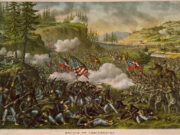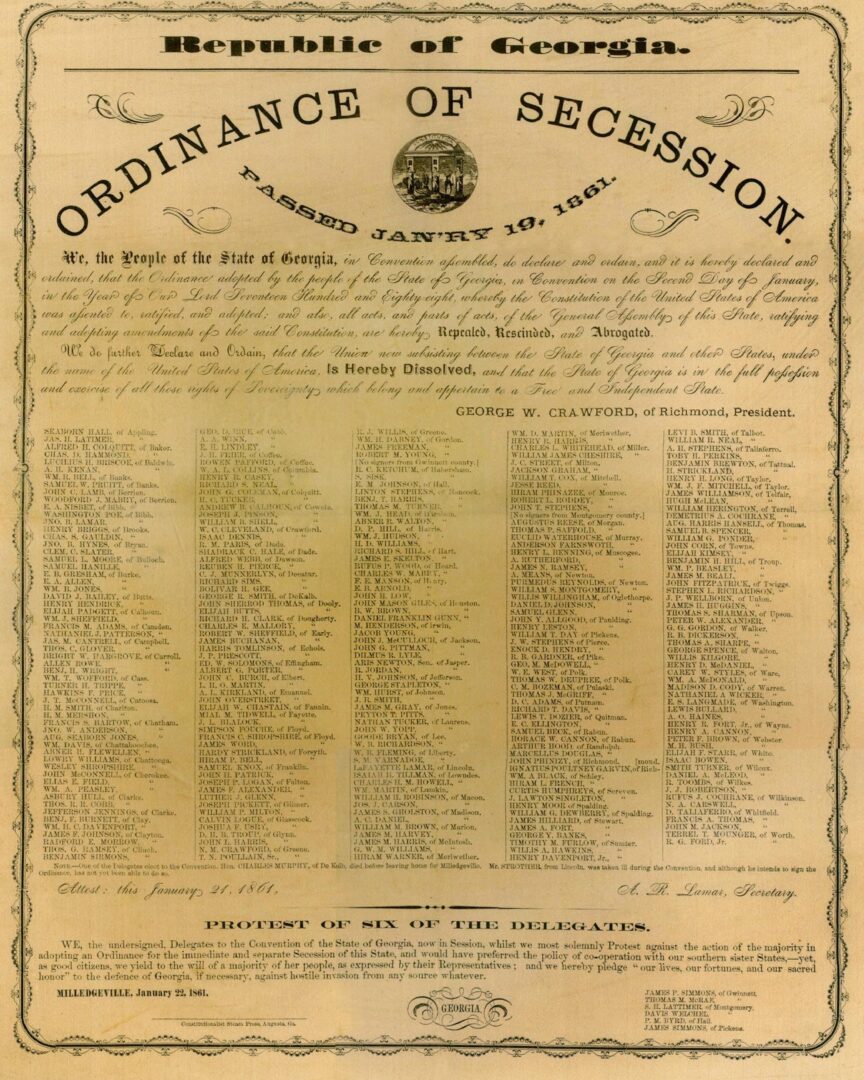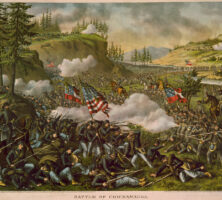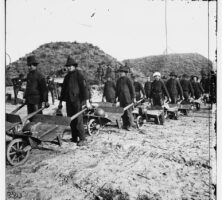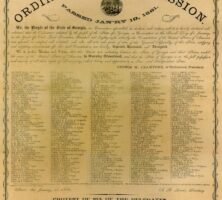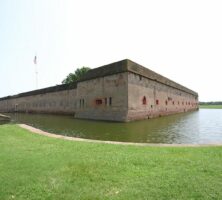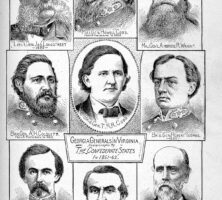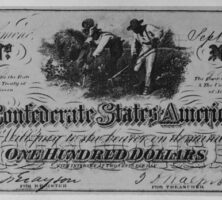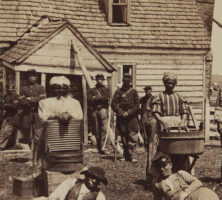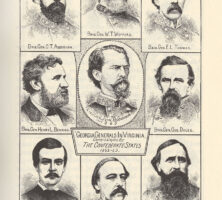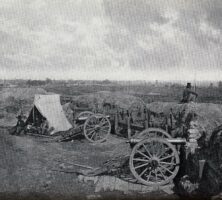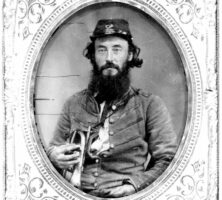The South, like the rest of the country, was forever altered by the dramatic events of the Civil War (1861-65). Few states, however, were more central to the outcome of the conflict than Georgia, which provided an estimated 120,000 soldiers for the Confederacy. In addition, several hundred white and 3,500 Black Georgians enlisted for the Union cause.
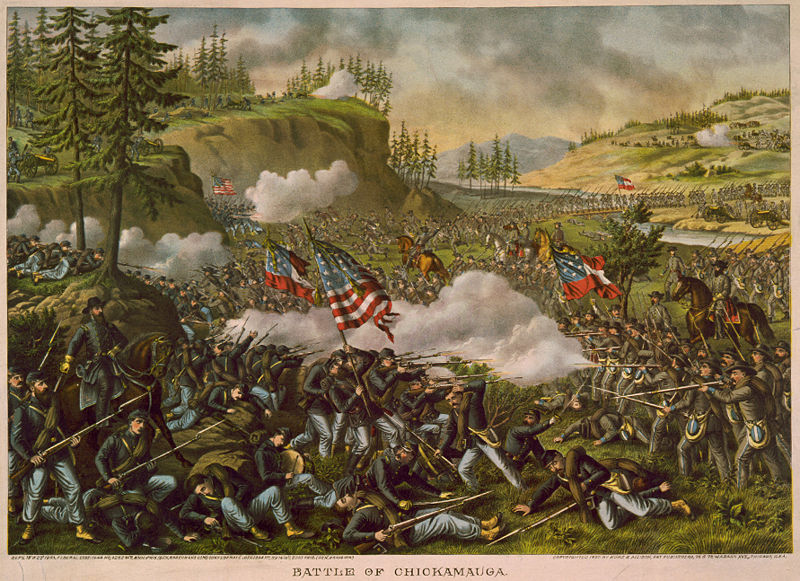
Courtesy of Library of Congress, Prints and Photographs Division
Georgia’s agricultural output was critical to the Confederate war effort, and because Georgia was a transportation and industrial center for the Confederacy, both sides struggled for control of the state. Some of the most important battles of the war were fought on Georgia soil, including Chickamauga, Resaca, and Kennesaw Mountain, while the battles of Peachtree Creek, Bald Hill (Atlanta), Ezra Church, and Jonesboro were significant turning points during the Atlanta campaign of 1864. Perhaps most important, one can argue that the Civil War’s outcome was decided in Georgia with the Atlanta campaign and U.S. president Abraham Lincoln’s subsequent reelection.
Georgians’ Road to War
When Lincoln’s election to the presidency triggered the secession crisis in the winter of 1860-61, most Georgians initially hoped for yet another sectional compromise. The Georgia legislature, however, following a directive from Governor Joseph E. Brown, appropriated $1 million for military expenses and called for the election of delegates to a state convention to discuss secession. The majority of Georgia’s political leaders at this point, including Francis S. Bartow, Henry L. Benning, Governor Brown, Howell Cobb, Thomas R. R. Cobb, Wilson Lumpkin, Eugenius A. Nisbet, and Robert Toombs, advocated secession. Their efforts focused on exciting white southerners’ fears of slave insurrection and abolition, which could potentially lead to Black equality and intermarriage.
Despite the best efforts of such antisecessionists as Alexander Stephens and Benjamin Hill, the die was cast. The secession convention vote on January 19, 1861, took Georgia out of the Union as expected, though by a closer vote than many had anticipated. Infantry regiments were authorized, and the convention appointed Bartow, the Cobb brothers, Nisbet, Toombs, Stephens, and four others as delegates to a convention of other seceded states to meet in Montgomery, Alabama, on February 4. At Montgomery, the delegates organized the Confederate States of America, and Georgians played an important role in creating the provisional Confederate government. Howell Cobb served as president of the convention, and Thomas R. R. Cobb was the main architect of the Confederate Constitution. Toombs and Stephens were prominent in the proceedings, but to their disappointment the presidency of the new nation fell to Jefferson Davis of Mississippi. Still, Stephens won the vice presidency, and Toombs accepted the office of secretary of state.
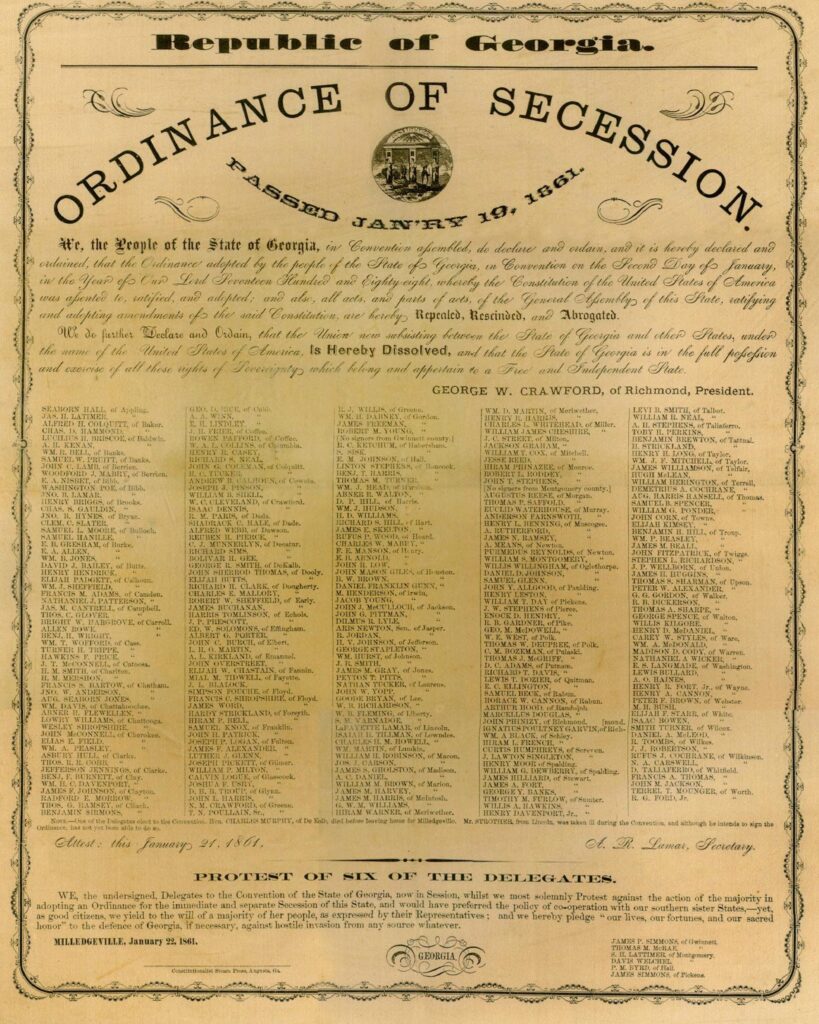
Courtesy of Hargrett Rare Book and Manuscript Library, University of Georgia Libraries.
The War Begins
After secession, most Georgians hoped to avoid war and peacefully leave the Union, but the firing on Fort Sumter, in the harbor of Charleston, South Carolina, on April 12, made conflict inevitable. Governor Brown’s call for volunteers on April 18 brought an enthusiastic response, and by October 1861 around 25,000 Georgians had enlisted in Confederate service. At first, Georgians experienced the war on far-off battlefields in Virginia and Tennessee.

Photograph by Brooke Novak
Soon, however, the war came to Georgia by sea in the form of Union general Winfield Scott’s “Anaconda Plan,” a strategy to weaken the Confederacy by blocking southern coasts and by dividing the Confederacy in two through attempts at occupying the Mississippi River. A Union naval force under Admiral Samuel F. Du Pont, commander of the South Atlantic Blockading Squadron, established a base of operations on Hilton Head Island, South Carolina, in the fall of 1861, to launch attacks along the south Atlantic coast and to disrupt international Confederate trade. Alarmed, President Davis sent General Robert E. Lee to Savannah to organize the defense of Georgia and upper Florida.
Lee lacked the resources to do much, however, and before long Union forces began capturing key points along Georgia’s coast. By March 1862 Union troops had seized all of Georgia’s coastal islands, and on April 10, 1862, Union batteries on Tybee Island wrecked Fort Pulaski, leading to the fort’s surrender and the closure of Savannah as a functioning port. Despite the blockade, the Confederacy hoped that European demand for cotton would also bring support for the southern cause. These hopes were unfounded, however, as anti-slavery sentiment in England kept the British navy from becoming involved.
By the war’s second year, the Union also targeted Georgia’s railroads. In April 1862 Union spy James J. Andrews led twenty saboteurs in a daring raid. In Big Shanty (present-day Kennesaw, in Cobb County) they seized the General locomotive and steamed northward. Western and Atlantic Railroad officials pursued them and, after a nearly ninety-mile chase, caught the Andrews gang near Ringgold before they could significantly damage the rail line. Confederate soldiers captured most of the saboteurs, and Andrews and seven of his raiders were hanged as spies in Atlanta. A year later, a Union cavalry force under Colonel Abel D. Streight attempted to cut the Western and Atlantic rail line near Rome, but Confederate general Nathan Bedford Forrest captured the Union force before it could do any real damage.
Georgians Battling Richmond
Meanwhile, the hardships and realities of war began to wear on Georgians. In April 1862 the Confederate government in Richmond initiated conscription to replenish depleted ranks. This was the first national draft in American history. Governor Brown argued that the draft was unconstitutional and despotic. He fought it and tried to maintain control of the state militia and other state troops. As the age limits of the draft were expanded, Brown protested anew. He relentlessly labored to field some viable separate state force and further circumvented conscription by recruiting militia members, who became known as “Joe Brown’s Pets.”
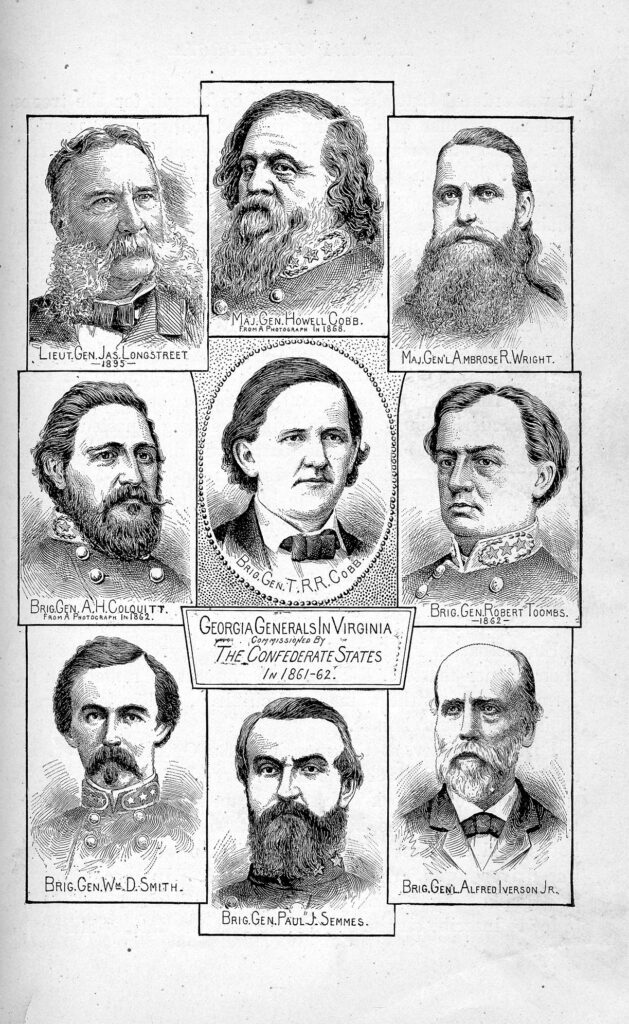
Courtesy of Hargrett Rare Book and Manuscript Library, University of Georgia Libraries.
Despite attacks from pro-Davis nationalists, Brown remained popular and won a fourth straight term as governor in 1863. But Brown was not the only Georgia statesman battling the Davis administration. Vice President Stephens spent much of his time at his home in Georgia denouncing Davis’s despotism. Toombs had quickly become bored as secretary of state and left to command a military brigade in Virginia, but he soon resigned and spent the rest of the war also denouncing the Davis administration. Even moderate Herschel V. Johnson joined the critics of the Richmond government. These men did much to hinder Confederate efforts and inflame anti-Davis sentiment.
Home Front Mobilization
While Brown struggled with the centralization policies of the Confederate government, he also worked to increase the state’s wartime production, especially with the manufacture of military supplies and equipment. Georgia quickly became a vital production center for the Confederate war effort. Atlanta, the state’s rail center, emerged as a home front, and the city contained one of the South’s few rolling mills, a quartermaster’s depot, and several major military hospitals. Additionally, Augusta, Columbus, Macon, and Savannah were vital industrial centers. Augusta was home to the Confederate Powder Works, the largest gunpowder factory in the Confederacy; one of the largest textile mills in the South; and an arsenal. Columbus had the Confederate Naval Iron Works, Columbus Naval Yard, cotton and woolen mills, and the South’s largest shoe factory. An arsenal in Savannah produced munitions until 1862, when operations were moved to Macon after the fall of Fort Pulaski. Macon also boasted a laboratory for bullet design and testing and was a depository for Confederate gold. The industrial village of Griswoldville, near Macon, manufactured weaponry before being destroyed by Union troops.
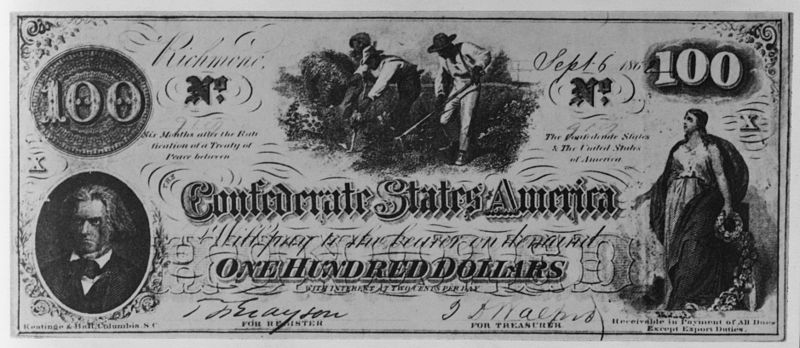
Photograph by Wikimedia
Financing the war was another struggle for the Brown administration. Like the rest of the Confederacy, Georgia tried to pay for the war with bonds and treasury notes instead of taxes. This led to massive inflation as paper money poured into the economy and the price of necessities soared beyond the reach of the masses. By early 1864 in Atlanta, for example, firewood sold for $80 a cord, corn for $10 a bushel, and flour for $120 a barrel; by contrast a Confederate private received $11 a month.
Governor Brown worked tirelessly to aid common whites and made sure that needy soldiers and their families received money and salt to preserve foodstuffs. Yet the hardships of war touched the lives of every citizen, male and female, white and Black. Georgia soldiers saw action in every major campaign of the Civil War, and although Georgia units were engaged in the battles of the western theater, most served in the eastern theater in the Army of Northern Virginia. These men faced chronic shortages of food, clothing, and medicine as the ravages of combat and sickness relentlessly depleted their ranks. At home, white women faced the dilemma of managing farms and providing food for themselves and the war effort without adequate labor. Indeed, Georgia women had to step into multiple roles, providing support to soldier aid societies, working in hospitals or factories, and caring for their families.
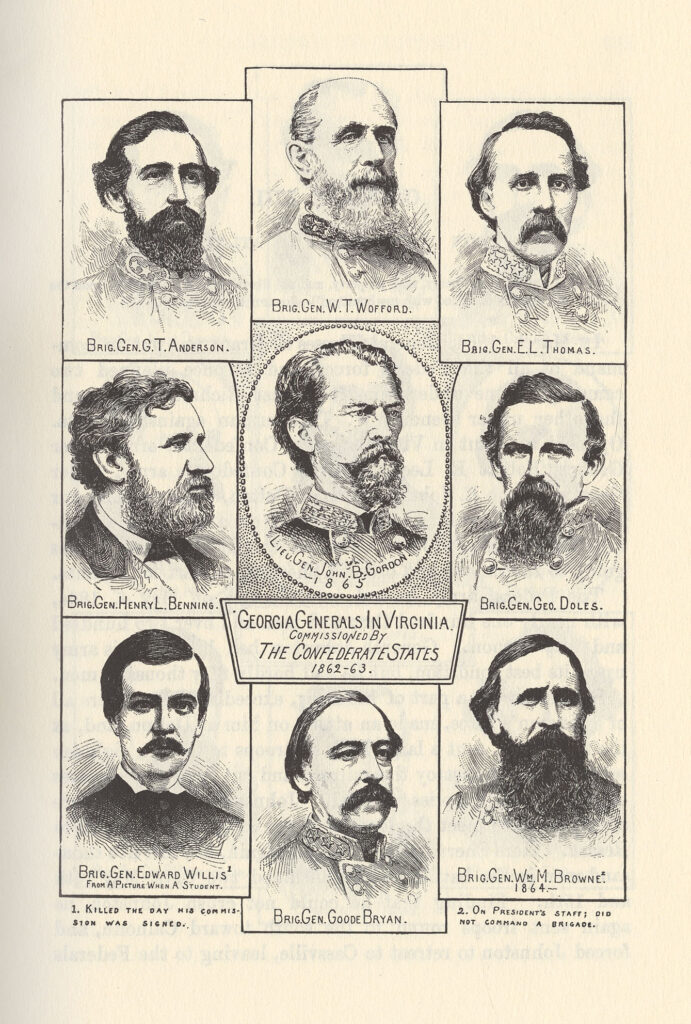
Courtesy of Hargrett Rare Book and Manuscript Library, University of Georgia Libraries.
Social and Military Upheavals
The war also challenged slavery and the plight of African Americans. Slavery broke down during the war, with enslaved workers using the absence of white males to secure better working and living conditions. While most enslaved Georgians remained on farms and plantations, many served the war effort of both sides as cooks, teamsters, servants, and laborers. Moreover, as Union forces penetrated the state, many bondsmen ran away to seek their freedom with the advancing Northern troops. Overwhelmed by the influx of freedpeople, Union forces set up “contraband” camps to provide food and shelter. In 1862 Union authorities began to authorize Black enlistment, and many Black recruits emerged on the coast and in northwest Georgia.
While both Confederate and Union forces sought ways to use Black labor, freedpeople continually looked for ways to assert their own desire for freedom, dignity, and economic stability. Crucial to maintaining and enhancing their physical freedom was ownership of land. In Savannah, Union general William T. Sherman issued his controversial Special Field Order No. 15, giving freed people control of abandoned lands in the Sea Islands and signaling a new era of Black independence throughout the South. While radical elements of the Republican Party applauded this measure, the idea of taking property from whites, even Confederates, and giving it to African Americans proved far too drastic for the majority of white Americans, North and South. Therefore, the order was rescinded following the war.
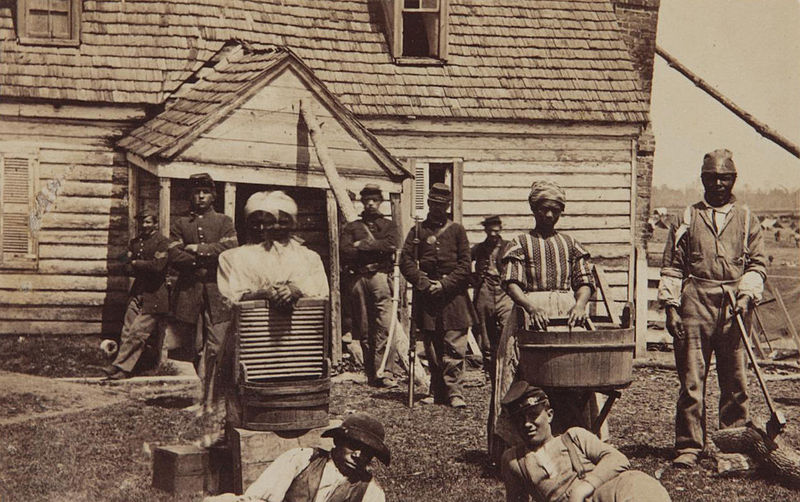
Photograph by Wikimedia
Adding to the chaos of the home front was the growing presence of Confederate deserters who, after 1863, hid in remote areas of the state, from the mountains in the north to the swamps and piney woods in the southeast. Equally harsh, Confederate and Unionist guerrillas of north Georgia made a hellish existence for many civilians. Georgia’s Appalachian counties had long been a stronghold for Unionists, and as the war continued to turn against the Confederacy, these areas became ever more hostile toward the Confederate government. War weariness led to other forms of dissent from Georgia civilians, who by late in the war joined with more ideologically committed Unionists to resist government-imposed conscription, impressment, and taxes-in-kind.
Union Military Incursion
The first full-scale military operations in Georgia took place in the late summer of 1863. In September a Union army under Major General William S. Rosecrans captured Chattanooga, Tennessee, and swept into Georgia. Later that month, Confederate forces under General Braxton Bragg defeated Rosecrans at the Battle of Chickamauga and followed the retreating Union troops back to Chattanooga. The situation eventually led Lincoln to remove Rosecrans and appoint Ulysses S. Grant as commander of all Union forces in the western theater. Using reinforcements, Grant shattered Bragg’s forces at Missionary Ridge, sending them fleeing to Dalton in north Georgia.
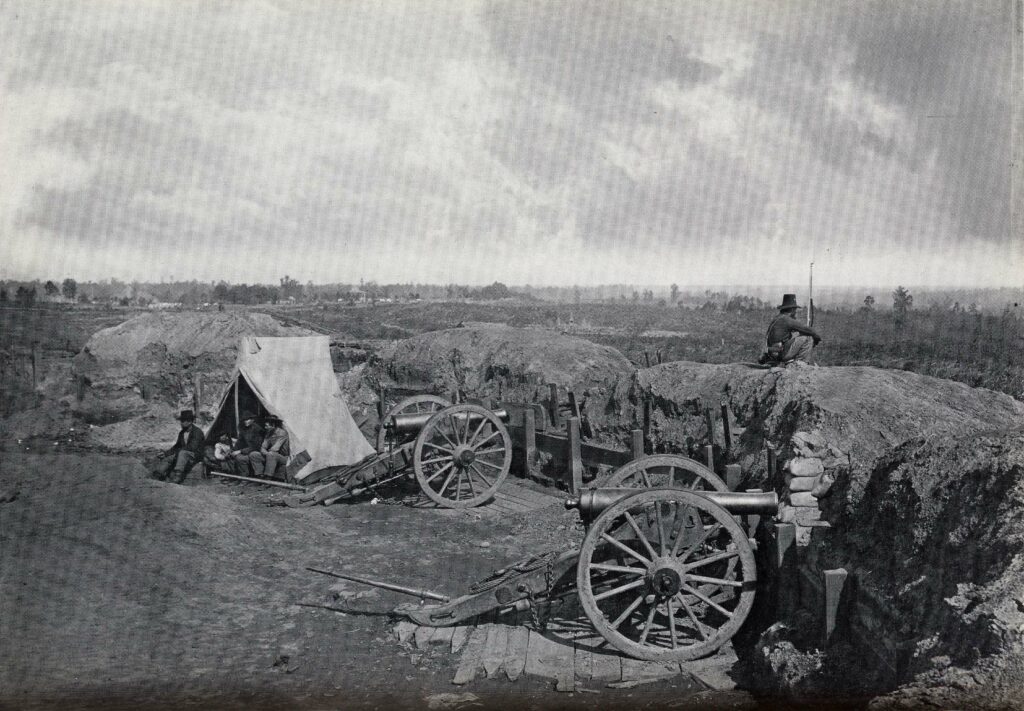
From Photographic Views of Sherman's Campaign, by G. N. Barnard
In May 1864, the beginning of the Atlanta campaign, the Union launched simultaneous advances in Virginia and Georgia designed to crush the last remaining Southern resistance. General Sherman began the invasion of Georgia with more than 110,000 men. His objective was to capture Atlanta and destroy the Confederate Army of Tennessee under the command of Bragg’s replacement, General Joseph E. Johnston.
Using his superior numbers to outflank the Confederate defenses of Dalton, Sherman began a long series of flanking maneuvers designed to bypass Johnston’s fortified positions. Only once, at the Battle of Kennesaw Mountain, did the Union troops attempt a large-scale frontal assault. Its failure led to a return to the war of maneuver. By July Sherman had pushed Johnston to Peachtree Creek at the outskirts of Atlanta. An anxious President Davis replaced Johnston with General John B. Hood. An aggressive commander, Hood attacked Sherman repeatedly during the battles of Peachtree Creek, Bald Hill (Atlanta), and Ezra Church. Although the attacks failed to destroy the Union troops, they did stymie Sherman’s advance.
Meanwhile, in August, the Confederates managed to defeat two Union cavalry raids headed for Macon and Andersonville. By the end of the month, however, Sherman broke the last Confederate rail line supplying Atlanta at Jonesboro, forcing the Confederates to abandon the city. The fall of Atlanta helped to ensure the reelection of Lincoln, thus making the Atlanta campaign arguably the most important of the war in terms of political consequences.
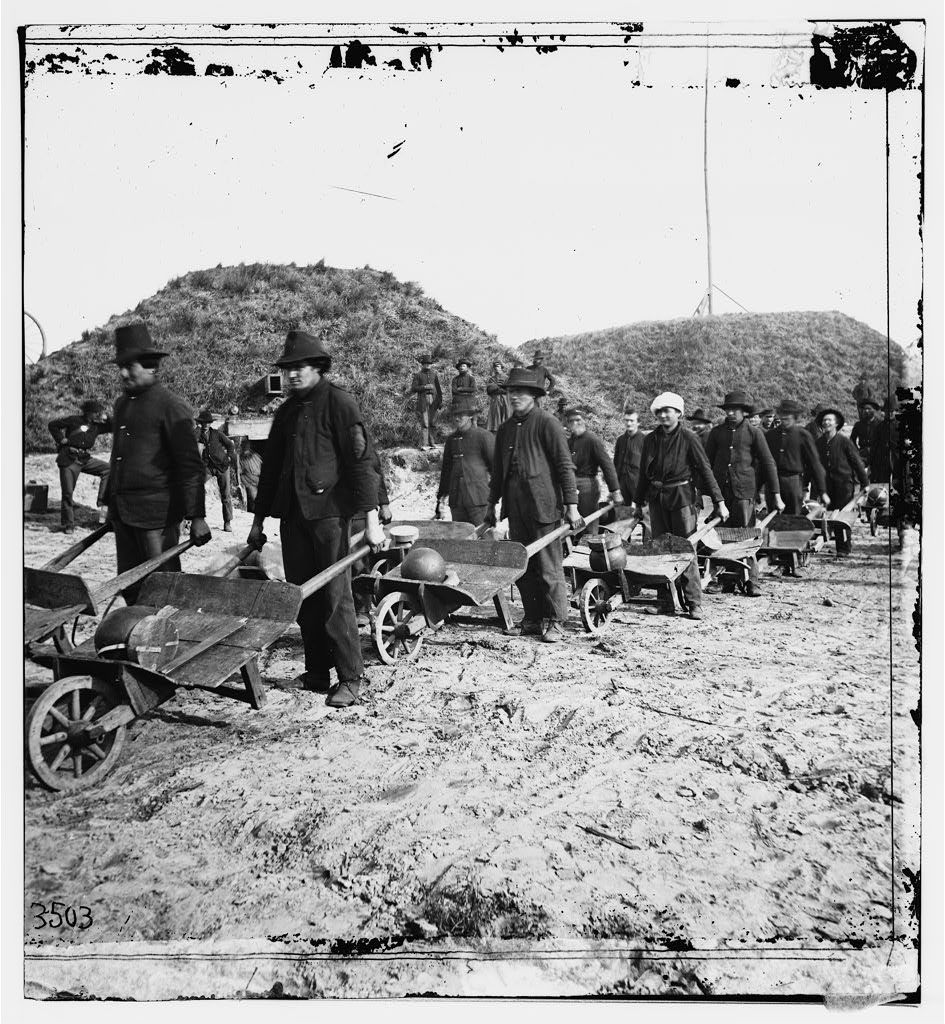
Courtesy of Library of Congress, Prints and Photographs Division
After evacuating Atlanta, Hood’s army marched north into Tennessee, hoping to disrupt Sherman’s supply lines and draw him away from Georgia. Sherman briefly followed but then swung back to Atlanta after sending Major General George H. Thomas northward with sufficient forces to crush Hood’s army near Nashville, Tennessee, by the end of the year. Meanwhile, in mid-November, Sherman launched his March to the Sea. Having destroyed Atlanta’s capacity as a rail and industrial center, Sherman and 60,000 men marched southeastward against token opposition, cutting a sixty-mile-wide swath through Georgia to Savannah. Along the way, rail lines, bridges, factories, mills, and other wartime resources were annihilated. Despite orders, private property was also looted and destroyed. The Union soldiers foraged liberally off the land, although instances of murder and rape were rare.
On December 21, 1864, Union forces finally reached Savannah. Triumphantly, Sherman telegraphed Lincoln: “I beg to present you as a Christmas gift the city of Savannah with 150 heavy guns and plenty of ammunition and also about 25,000 bales of cotton.” In February 1865 Sherman moved northward out of the state to crush resistance in the Carolinas.
The War’s End
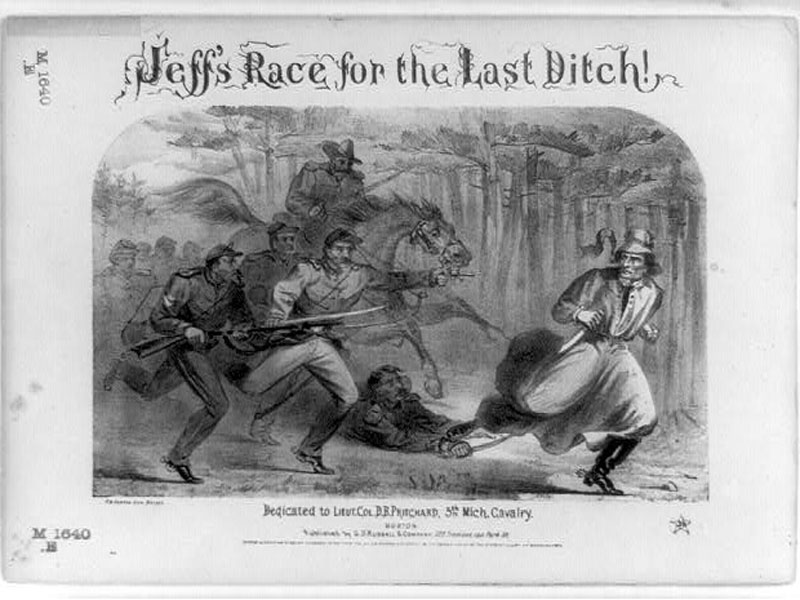
Photograph from Wikimedia
The last significant military action in Georgia came from Alabama, with Union major general James Harrison Wilson’s cavalry force capturing Columbus on April 16, wrecking its industrial center, and moving on to Macon. Wilson’s Raid occurred one week after the surrender of the Confederacy at Appomattox. By early May, Governor Brown formally surrendered the state’s remaining military forces. Union forces quickly arrested Brown, Stephens, and Cobb, but Toombs escaped to Europe. Also captured was Captain Henry Wirz, the commandant at Andersonville Prison, which had the highest mortality rate of any Civil War prison; Wirz was the only person to be executed for war crimes committed during the Civil War.
Jefferson Davis held the last meeting of the shadow government at Washington in Wilkes County. On May 10 Wilson’s forces captured him at Irwinville. The long war had finally ended, and emancipation was completed in 1865. Although Georgians realized that the nation would remain united and that slavery had ended, other questions remained to be answered as they sought during Reconstruction to build a new Georgia from the rubble of the old.


